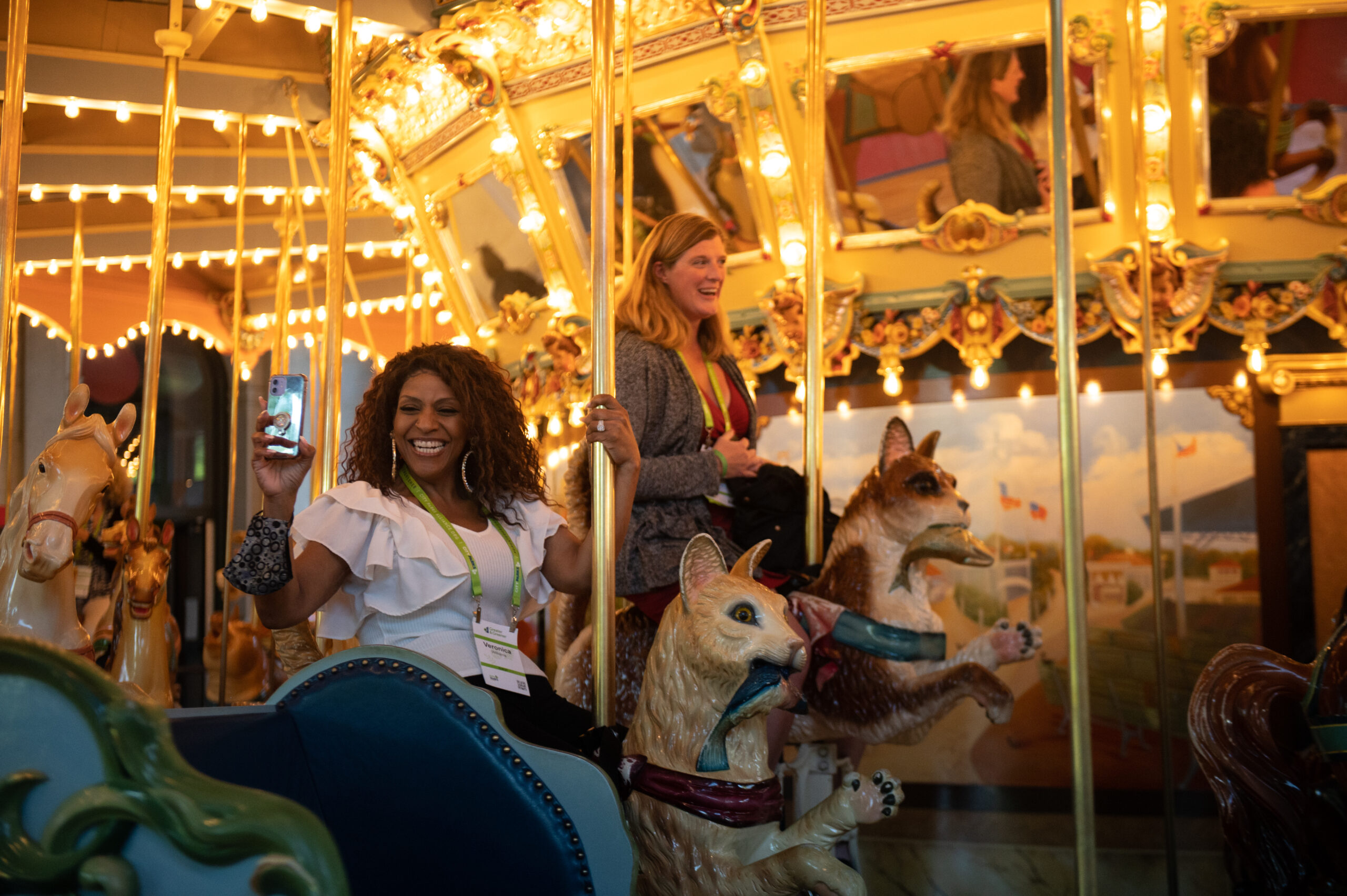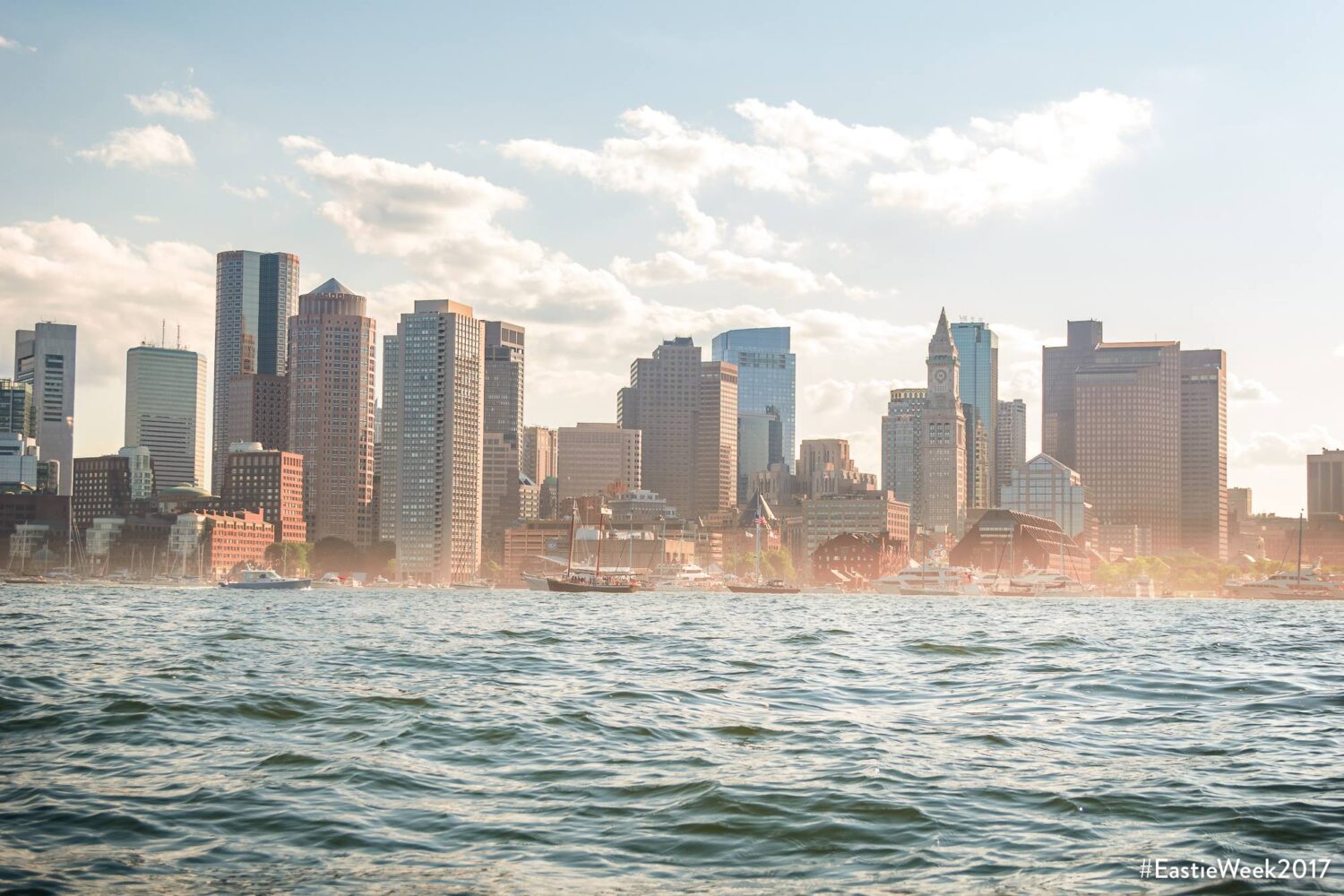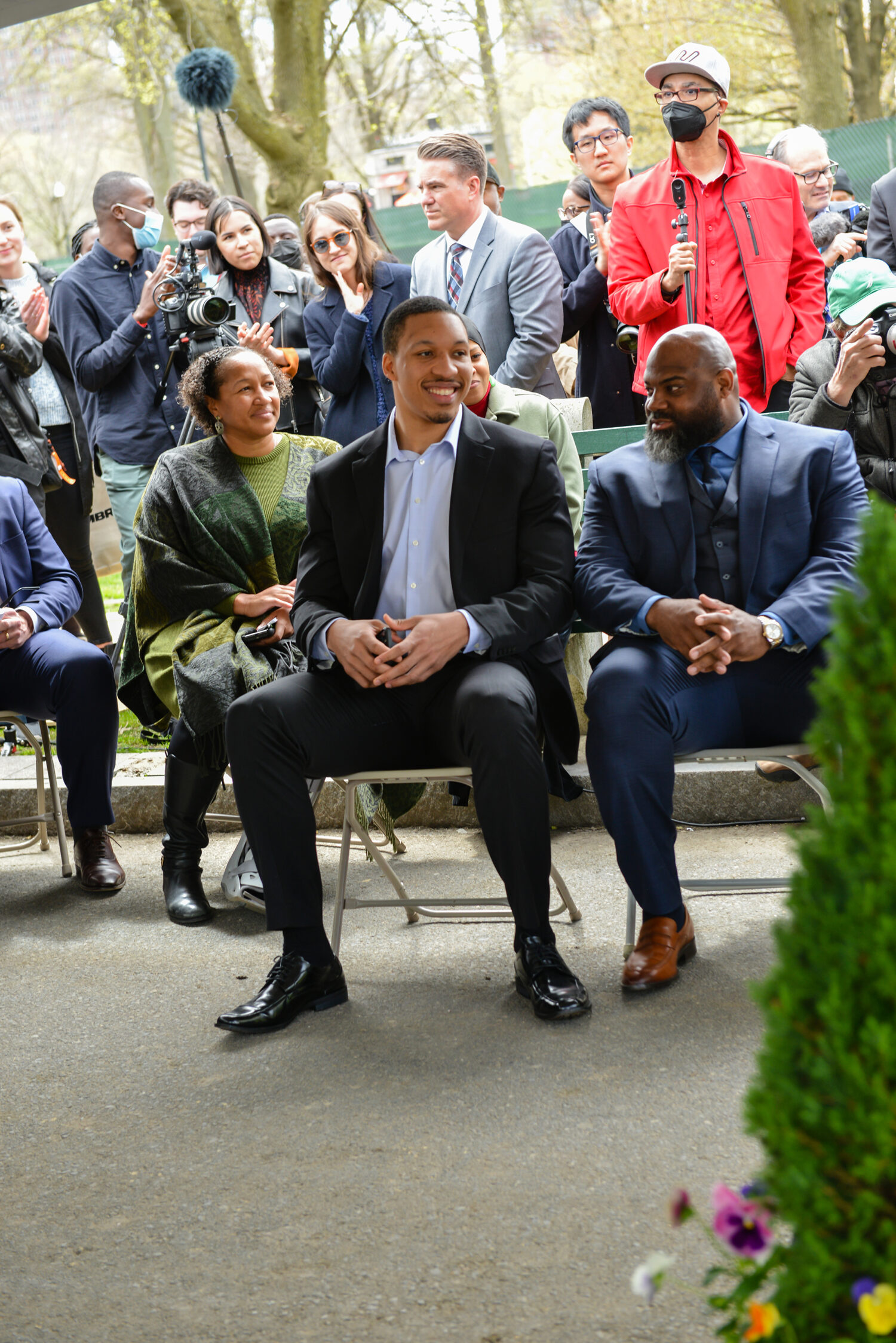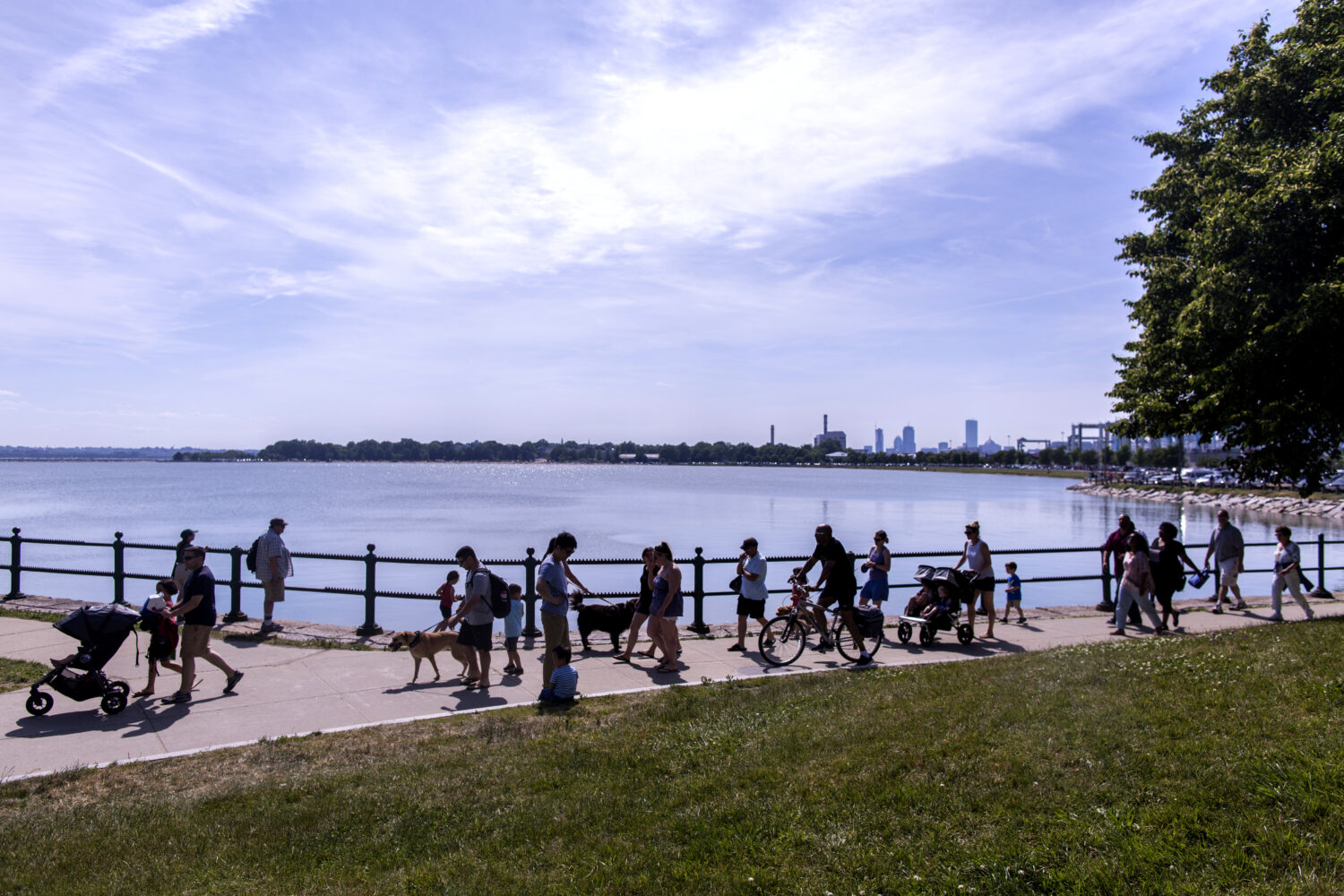With fall cool in the air and Boston’s leaves starting to turn, I didn’t want to let any more time pass before sharing the top five most inspired ideas from our summer gathering at the Greater and Greener Conference in Philadelphia, presented by the City Parks Alliance. I had the opportunity to travel to the City of Brotherly Love with a group of Barr’s waterfront grantees and other partners. We joined mayors from cities large and small, community organizers, landscape architects, philanthropic innovators, journalists, urban planners, and transportation and environmental influencers from across the country. The first live “Greater and Greener” gathering since 2019 in Denver, Colorado, it was such an inspiring trip. I asked folks who joined me what left the strongest impressions on them and what Boston could learn from the presenters, panelists, participants, and our host city. From their comments (below, in their own words), I heard five inspired ideas:
Inspired Idea #1: Creative, Varied, Targeted Public Access to Industrial Spaces
Boston has a rich industrial waterfront history. From the 1600’s to today these areas continue to serve an important economic and social role for the city. While conversations today often focus on the tricky balance between industrial water dependent uses and non-water dependent real estate trends, less energy has been invested in breaking down the invisible barrier between working waterfronts and their abutting neighborhoods. With imagination, intentional planning, and collective effort, it’s possible to create exciting, welcoming spaces that will add new life to Boston’s waterfront and shine a light on the importance of these spaces to the overall economic health of the city.
“I’ve been thinking a lot about how inspiring it was to walk Phase One of the Rail Park with ED Rebecca Chan, and to see an industrial reuse open space project that is underway with a quarter mile section complete but still a long way to go towards their end goal of three miles. The smaller section that is open now truly feels like a restorative oasis in the city. Visiting the space, experiencing its effects—literally feeling the cooling effects of trees and vegetation on a hot day, and hearing about their diverse public programming was a good reminder of how open space in the city can be small but mighty.”
“I especially appreciated going to the Delaware River waterfront where historic piers have been transformed into public spaces, each with their own identity from the high design of Race Street to the industrial grit of Cherry Street (complete with art studios and paletas) to the pop-up carnival at Penn’s Landing. It was interesting to imagine an alternative universe where the Seaport’s finger piers had evolved into something more closely resembling this.”
“Going to the Waterworks highlighted the multifaceted uses of a city park in an equitable manner: private receptions happening alongside fishing and exercising.”

Inspired Idea #2: Authentic Engagement of Diverse Stakeholders
Much of the neighborhood-level work around the harbor is focused on amplifying community voices and reserving their seat at the table when important decisions are made. Part of the challenge in this work is that deep, authentic engagement requires time and resources. To undo a long history of exclusion from its public process, Boston must commit to a future of inclusion.
“We found it valuable to learn from how Philadelphia is engaging key partners—specifically youth and older adults in authentic community building and mobilization.”
“I went on a “walking tour” (by bus) to meet small parks friends groups, and I was so excited to see how a structure for enabling local groups to adopt and program small parks can activate all sorts of spaces. The City of Philadelphia’s systems feel so much more collaborative than what most folks experience when trying to work with DCR or Boston Parks, especially when it comes to event permitting and small repairs.”
“When revitalizing parks it’s important to maintain and support the existing, organic uses – work with those existing users to come up with a design and operations plan.”
“Even if the park itself it not displacing existing people (i.e. in a post-industrial area with no existing residents), it can contribute to gentrification at the city/neighborhood scale – so it’s important to think about who the park is serving and centering those that need it most.”
“You can’t change a community without their participation.”
“Historic exclusions means that we have to work hard to promote inclusion.”

Inspired Idea #3: Prioritize Access for People, Not Cars
As we think about remaking some of Boston’s current waterfront spaces (like Moakley Park) and creating new resilient ones, we must ensure that design and usability prioritize people and reflect the varied ways in which they will arrive, utilize the space, and get back home. Strong public spaces reflect important connections between parks and recreational spaces and other city services from housing, transit, economic development, and more.
“The Schuylkill River waterfront, which I explored both on a morning run and at the closing reception, felt like a world where Roxbury and the ICA were right on the Charles River. I appreciated the racial diversity of the folks spending time along the waterfront and the volume of people relaxing along the length of it that I explored. Although there were places where cars drove near the water, the quiet contrast to the buzz of Storrow made it feel even more pleasant and spread people more throughout the park.”

Inspired Idea #4: Robust Programming and Amenities
The experience of diversity and interconnection speak to the importance of open space planning and programming that is intentional, inclusive, and creative. From the micro to the macro, the most engaging public spaces incorporate different design elements – from swings, to playgrounds, walking paths, and sports fields – that create opportunities for different types of events and programming to occur.
“The importance of youth education in parks – parks have the potential to make good people!”
“Free time is like a petri dish – it can grow good or bad bacteria (idea of programming parks and having places for kids/teens to hang out that is safe, healthy and fun).”
“Parks that serve families can help to offset gentrification issues associated with parks/green infrastructure – things like playing fields, food kiosks, youth programing can serve everyone regardless of income/background.”
“Observation: Philly loves hammocks and swings in public spaces! I saw 5+ parks, plazas, beer gardens, bars, etc with hammocks. We should add them to Boston parks.”

Inspired Idea #5: Preserve Natural Uses and Honor Sacred Spaces
As we envision and plan for the next generation’s waterfront, we should remain committed to highlighting the diverse history, uses, and impact the harbor has had on residents and visitors alike.
“The presentation about Singapore stayed with me thanks to the notion of the city being embedded in nature – as opposed to the other way around. We often approach policy with the idea that we can bend nature to our will….but we can’t fight Mother Nature.”
“My visit to the historic African American Eden Cemetery outside Philly showed me the importance of using sacred spaces to honor the legacy of those who fought for freedom. Established in 1902, Eden is the oldest existing Black owned cemetery in the United States. Among the notables buried there are abolitionist William Still and contralto Marian Anderson.”

Boston’s waterfront is already a treasure. But it could be so much more so, for many more people than the few who already benefit from and enjoy it today. The waterfront also has enormous potential to help Boston achieve its goals of becoming a more inclusive, equitable, thriving, and climate resilient city. Achieving that potential requires robust funding, inclusive planning strategies, and a willingness to spot and implement good ideas, no matter where they come from.

Pictured above: Our Boston group in Philadelphia.




